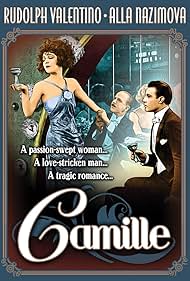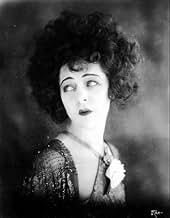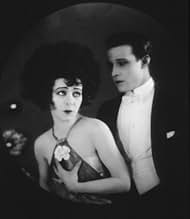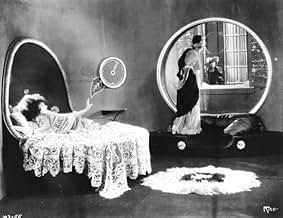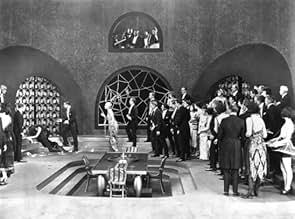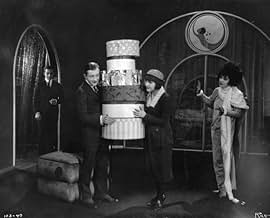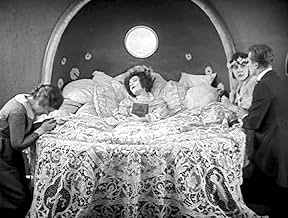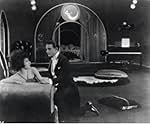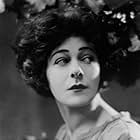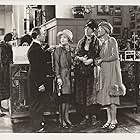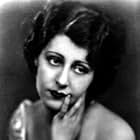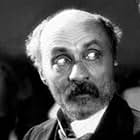IMDb RATING
6.5/10
1.1K
YOUR RATING
A courtesan and an idealistic young man fall in love, only for her to give up the relationship at his status-conscious father's request.A courtesan and an idealistic young man fall in love, only for her to give up the relationship at his status-conscious father's request.A courtesan and an idealistic young man fall in love, only for her to give up the relationship at his status-conscious father's request.
- Director
- Writers
- All cast & crew
- Production, box office & more at IMDbPro
Storyline
Did you know
- TriviaThe original play opened in Paris in 1852. The first Broadway production opened on 9 December 1853. There have been 15 Broadway revivals of the popular play, the last (to date) in 1935.
- Quotes
Title Card: Winter. Paris, magic city of pleasure, yet beneath its tinseled gaiety throbbing with life's grim note of passion and tragedy.
- Alternate versionsOn 14 February 2002, Turner Classic Movies (TCM) broadcast the television premiere of the film with a new score by Peter Vantine, and a running time of 70 minutes. Vantine won the privilege of providing the score from a nationwide contest conducted by TCM, in which there were 375 entries. This version can be seen as a special feature on the Warner Bros. Home Video DVD for Camille (1936), released in 2005.
Featured review
Alla Nazimova (1879-1945) is one of the female pioneers of the silent cinema. While her name endures, her movies are seldom seen, and indeed many of them have been lost altogether. She was a native of Russia, born of Jewish parentage as Adelaide Leventon, and studied with Stanislavsky. She came to the United States in 1905 and gained fame for her skills as a dancer, and an actress, conquering Broadway and becoming renowned as the era's greatest interpreter of the plays of Ibsen. Her stage fame brought about her first appearance on screen in 1916, and although her subsequent Hollywood starring career spanned a brief ten years and only seventeen films, her influence was profound. Nazimova also dominated the making of most of her films, often functioning without credit in all three primary capacities of producer, director, and writer. In addition to her films, Nazimova became the first of the movie queens to establish a virtual Hollywood court at her home (later known as "the Garden of Alla"), largely of emigres, who were dedicated in many different ways to the art of the cinema. Rudolph Valentino became part of this group in 1920, when Nazimova was forty and at the height of her fame and power. Through the creative community she gathered around her, she helped form the milieu that inspired what Valentino hoped to do in movies. Under the influence of Nazimova and others, Valentino came to realize the artistic potential of the cinema, and sought to ally himself with talented individuals. Valentino had spent several years moving up from a supporting player to his breakthrough role in THE FOUR HORSEMEN OF THE APOCALYPSE (1920). Before the release of THE SHEIK in 1921, with Valentino in the title role that would secure forever his star image, he had played leading roles in a number of disparate films. It was in this interregnum that Nazimova selected him to star as the true love Armand opposite her in CAMILLE, a property she had chosen to make.
CAMILLE, distributed by Metro, was her last film for a studio; she selected the property, and the scenario for this modern-day version of the Alexandre Dumas fils classic was written by June Mathis (1892-1927). The third significant woman contributing to CAMILLE was the film's art director, Nazimova protege Natacha Rambova. Unlike Nazimova, despite her name Rambova was not an expatriate, but the daughter of a wealthy Utah family (born Winifred Shaughnessy) who had adopted the name Natacha Rambova before she met Nazimova. By the time of CAMILLE, Rambova and Valentino had fallen in love, having met one another through Nazimova. Part of his attraction to Rambova was his recognition of Rambova as a woman of rare intelligence and ability as well as beauty, with whom he fell deeply in love. In collaboration with Rambova, he sought to make films that were more than commercial product, but studio moguls bitterly resented Rambova's intelligence as a woman and a wife, and Rambova found herself and her marriage to Valentino smeared by gossip. Ultimately, the strains would drive Valentino and Rambova to divorce a year before his sudden death in 1926. CAMILLE richly displays the range of Nazimova's acting ability, at once varied, highly stylized, and realistic in the role of Marguerite Gauthier. Perfectly complimenting her performance is the mise-en-scene. For instance, ovals continually reappear around Nazimova in closeups, accented by the many iris-in shots, all evoking Marguerite's symbol of the camellia. Rambova's designs, both linear and ornamental, highlight the ubiquitous circular motifs through a myriad of similar background shapes, such as windows and doors. There are many typical European touches throughout the melodramatic narrative, such as the silhouettes of the dancers seen through arches in the casino. Snowfall represents Marguerite's illness, while her temporary recovery under Armand's care is matched by the similarly white, happy blossoms of spring and the sunlight. Marguerite perceives the two lovers as akin to the protagonists in Manon Lescaut, after she receives the volume as a gift from Armand, the only token she has of her relationship with the poor student. Armand's father demands that Marguerite, as a woman with a scandalous past, renounce Armand for the sake of his own future, and that of his sister. Forced to make the ultimate sacrifice of her love, a typical convention of films centered on female protagonists, Marguerite returns to her old life, hoping Armand will come to hate the memory of their time together. Marguerite's death scene extends screen time, and is presented both through her own last blurred visions, as well as how she is seen by her friends and the callous men violating her bedroom to scour it for valuables to pay her creditors. The editing captures the many changes in emotion and the frequent intercutting between the sad present and the fond memories of past idylls with Armand. CAMILLE succeeds as an example of the art film, and yet one that also retains the fundamental elements of melodrama that appeals to audiences, successfully melding both aspects in a manner that the more avant-garde Nazimova-Rambova collaborations do not achieve. CAMILLE was not their first joint effort; Rambova had previously designed Nazimova's BILLIONS (1920), and later worked in the same capacity on Nazimova's A DOLL'S HOUSE (1923) and SALOME (1923). After CAMILLE, however, Nazimova's popularity was diminishing, and she lost a fortune on SALOME, an independent production she financed which saw minimal release because studio executives believed it would be too highly stylized for audiences. Nazimova lost her prestige in an industry dominated by those who saw film in strictly commercial terms, and for whom Nazimova's talent was excessively offbeat. The remainder of her movies were made for much-needed income, without the control she had once enjoyed. She resumed acting on the stage, until returning to Hollywood in the last few years before her death in 1944. One of her first comeback films would be, ironically, the 1942 remake of Valentino's silent film BLOOD AND SAND.
CAMILLE, distributed by Metro, was her last film for a studio; she selected the property, and the scenario for this modern-day version of the Alexandre Dumas fils classic was written by June Mathis (1892-1927). The third significant woman contributing to CAMILLE was the film's art director, Nazimova protege Natacha Rambova. Unlike Nazimova, despite her name Rambova was not an expatriate, but the daughter of a wealthy Utah family (born Winifred Shaughnessy) who had adopted the name Natacha Rambova before she met Nazimova. By the time of CAMILLE, Rambova and Valentino had fallen in love, having met one another through Nazimova. Part of his attraction to Rambova was his recognition of Rambova as a woman of rare intelligence and ability as well as beauty, with whom he fell deeply in love. In collaboration with Rambova, he sought to make films that were more than commercial product, but studio moguls bitterly resented Rambova's intelligence as a woman and a wife, and Rambova found herself and her marriage to Valentino smeared by gossip. Ultimately, the strains would drive Valentino and Rambova to divorce a year before his sudden death in 1926. CAMILLE richly displays the range of Nazimova's acting ability, at once varied, highly stylized, and realistic in the role of Marguerite Gauthier. Perfectly complimenting her performance is the mise-en-scene. For instance, ovals continually reappear around Nazimova in closeups, accented by the many iris-in shots, all evoking Marguerite's symbol of the camellia. Rambova's designs, both linear and ornamental, highlight the ubiquitous circular motifs through a myriad of similar background shapes, such as windows and doors. There are many typical European touches throughout the melodramatic narrative, such as the silhouettes of the dancers seen through arches in the casino. Snowfall represents Marguerite's illness, while her temporary recovery under Armand's care is matched by the similarly white, happy blossoms of spring and the sunlight. Marguerite perceives the two lovers as akin to the protagonists in Manon Lescaut, after she receives the volume as a gift from Armand, the only token she has of her relationship with the poor student. Armand's father demands that Marguerite, as a woman with a scandalous past, renounce Armand for the sake of his own future, and that of his sister. Forced to make the ultimate sacrifice of her love, a typical convention of films centered on female protagonists, Marguerite returns to her old life, hoping Armand will come to hate the memory of their time together. Marguerite's death scene extends screen time, and is presented both through her own last blurred visions, as well as how she is seen by her friends and the callous men violating her bedroom to scour it for valuables to pay her creditors. The editing captures the many changes in emotion and the frequent intercutting between the sad present and the fond memories of past idylls with Armand. CAMILLE succeeds as an example of the art film, and yet one that also retains the fundamental elements of melodrama that appeals to audiences, successfully melding both aspects in a manner that the more avant-garde Nazimova-Rambova collaborations do not achieve. CAMILLE was not their first joint effort; Rambova had previously designed Nazimova's BILLIONS (1920), and later worked in the same capacity on Nazimova's A DOLL'S HOUSE (1923) and SALOME (1923). After CAMILLE, however, Nazimova's popularity was diminishing, and she lost a fortune on SALOME, an independent production she financed which saw minimal release because studio executives believed it would be too highly stylized for audiences. Nazimova lost her prestige in an industry dominated by those who saw film in strictly commercial terms, and for whom Nazimova's talent was excessively offbeat. The remainder of her movies were made for much-needed income, without the control she had once enjoyed. She resumed acting on the stage, until returning to Hollywood in the last few years before her death in 1944. One of her first comeback films would be, ironically, the 1942 remake of Valentino's silent film BLOOD AND SAND.
- briantaves
- Sep 22, 2004
- Permalink
Details
- Release date
- Country of origin
- Languages
- Also known as
- Dama sa Kamelijama
- Production company
- See more company credits at IMDbPro
- Runtime1 hour 12 minutes
- Color
- Sound mix
- Aspect ratio
- 1.33 : 1
Contribute to this page
Suggest an edit or add missing content

